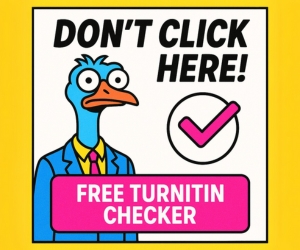
Understanding Turnitin: What Is It and Why It Matters
Turnitin is a powerful tool widely used in educational settings to help uphold academic integrity. It serves as a plagiarism-checking service that assists educators in identifying original work and ensuring that students abide by academic standards. The platform not only scans for matching text but also offers feedback on writing to help improve students’ writing skills. In this digital age, where information is readily available online, understanding how to use Turnitin effectively can empower students and educators alike.
In 'Turnitin class id and enrollment key |No repository use EP', the discussion dives into how students can access Turnitin effectively, igniting a deeper analysis of its implications for education.
How To Access Turnitin Without Repository Use
One common concern among users is how to access Turnitin without engaging its repository feature, which saves student submissions for future checks. This option can sometimes discourage submissions due to privacy fears. To sidestep this, educators can create a class ID and an enrollment key that allows students to submit their work for checking without storing their submissions in the Turnitin database.
For users who are unfamiliar with these settings, they can find instructions typically included within their institution’s learning management system or by visiting the official Turnitin website. It’s vital to note that opening up this option can foster a more honest submission environment and encourage students to focus on genuine writing.
The Benefits of Using Turnitin in Education
Using Turnitin enhances educational quality by encouraging original thinking and proper citation. When students know their work will be checked against a vast database, they are more likely to put in the effort to create authentic content. The feedback features can also guide students toward better writing practices, enhancing their overall academic performance and future career preparedness.
Encouraging a Culture of Academic Integrity
Beyond just checking for plagiarism, Turnitin cultivates an environment of academic honesty. By involving students in the process of utilizing Turnitin, schools can promote awareness about what constitutes plagiarism and the importance of originality in their work. Discussions around ethics and citation practices can lead to a deeper understanding of writing responsibilities and intellectual property rights.
Looking Ahead: The Future of Academic Assessments
As technology continues to evolve, tools like Turnitin will likely adapt to meet new educational challenges. Future versions may include advanced AI features that not only detect plagiarism but also provide more comprehensive writing assessments, fostering an even deeper engagement with writing skills among students. Embracing these changes can significantly benefit educators and learners.
How You Can Bypass AI Detectors
If you’re concerned about original submissions being flagged or detected as plagiarized, there are resources available to help you navigate these issues like Prompt2Human. This platform offers guidance on maintaining your work’s originality while navigating the complexities of academic submissions.
In conclusion, utilizing tools like Turnitin without repository constraints is a viable approach in fostering an environment where students can learn and grow as writers while respecting academic integrity. With the correct use of such tools, educators can significantly enhance writing proficiency and encourage students to take pride in their unique contributions!
 Add Row
Add Row  Add
Add 












 Add Row
Add Row  Add
Add 

Write A Comment